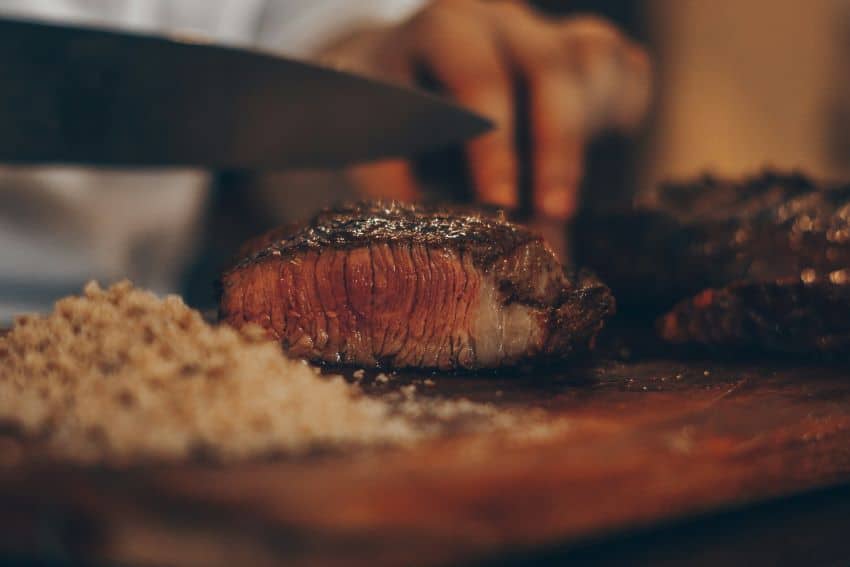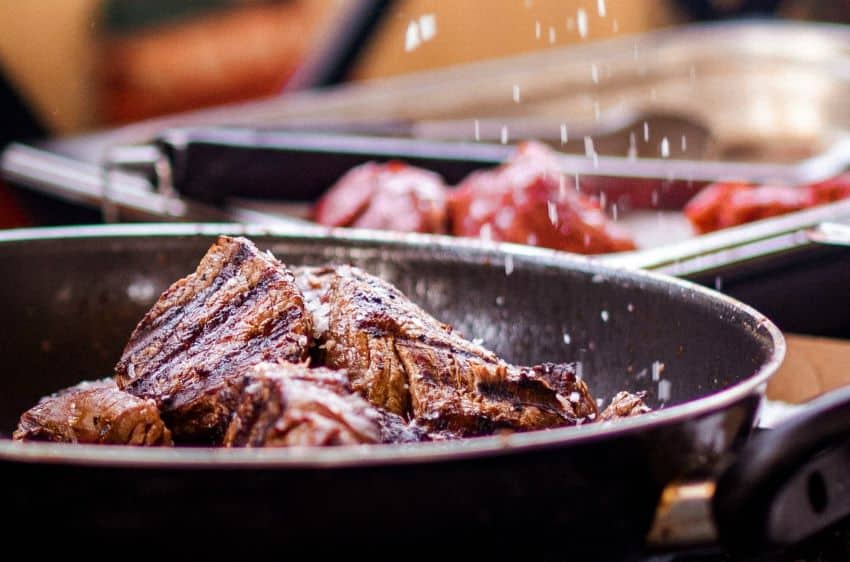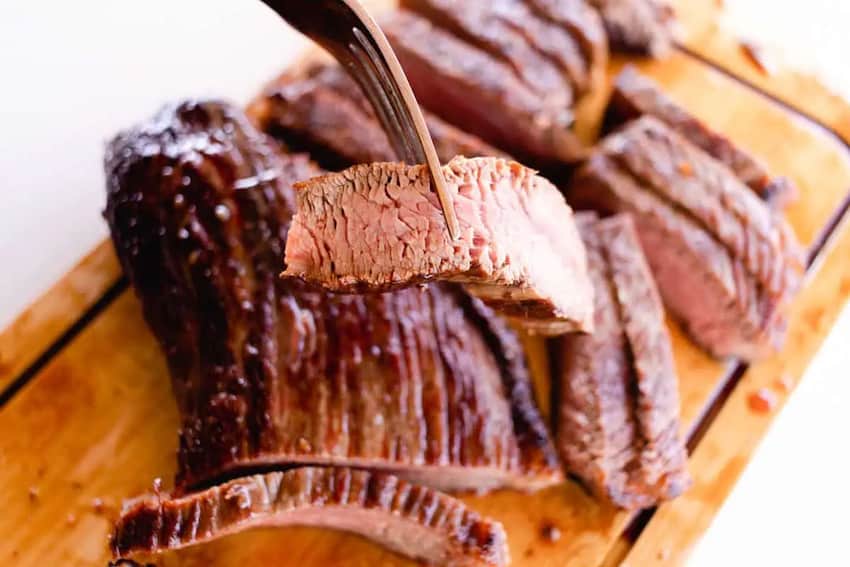One of my favorite culinary revelations after moving to Mexico was how popular Brazilian steakhouses are here. Mexico has a rich grilling, or asado, tradition so it’s no surprise that the novel experience of a Brazilian steakhouse is celebrated all throughout the country.
The unending torrent of waiters who float to your table offering expertly grilled meats on long, sword-like skewers seemed so foreign compared to the boring Golden Corral-type buffets in the United States that I was accustomed to. There is one cut of beef that always stands out to me in these steakhouses – the “Queen of Steaks,” picanha! This triangular piece of meat, with its cap of fat and luscious flesh beneath, demands culinary reverence.

To experience picanha is to taste a symphony of flavors – umami-full meat, subtly seasoned, is like an orchestrated performance of culinary finesse. In the world of beef, picanha stands as a testament to both artistry and gastronomic science.
The unique grain of picanha allows for optimal rendering of fat during the grilling process, creating a harmonious marriage of crispy exterior and succulent interior. Understanding the meat’s structure is crucial – the fat cap acts as a self-baster, enriching the meat’s flavor and tenderness. The traditional Brazilian style of preparation is cutting the picanha into one-inch wide pieces, skewering with the fat cap facing outwards, and cooking it over a very hot open flame. A simple and beautiful method to enjoy this steak, but certainly not the only way. Today, I want to talk about a very different way to tackle this triangle cut.
Now let’s talk about my favorite way to cook this deliciousness: the reverse sear. Classic winter weather has arrived, a thick “chipi-chipi” of rain is stubbornly hovering over your neighborhood and you don’t feel like cleaning off the grill? No worries, this reverse sear method only calls for an oven and (at least) a 12-inch cast iron pan.
Understanding the science behind the process is key, and reverse searing offers a calculated approach. It flips the conventional script by employing a gentle, low-temperature cooking method to bring out the best in this prized cut of beef, and then a high-temperature, blistering sear for the finishing move. This method will bring the flavors of a Brazilian steakhouse to your kitchen and is perfect for hosting gatherings of any size!

By starting with a “low and slow” heat, the picanha undergoes a transformation – allowing its natural juices to permeate every fiber, rendering a tender and evenly cooked interior. This methodical process ensures that the meat reaches its desired doneness without sacrificing moisture or tenderness, a feat unmatched by traditional searing techniques.
Once the picanha reaches the ideal internal temperature, the grand finale awaits: the sear. It’s the high-heat finish that locks in the flavors, creating a mouthwatering crust that envelops the succulent beef within. For those seeking the epitome of flavor and texture in their picanha, the reverse sear method is an ode to meticulousness, an artful journey that ensures each bite is tender and robust, with an even texture throughout the cut. You may be thinking, without the grill, aren’t we going to miss some of that smokiness? Don’t worry – in this recipe, I use smoked salt!
Ingredients:
1 or more picanha steaks (about 2-3 pounds each)
Coarse smoked salt (I use Maldon smoked salt)
Black pepper (freshly ground, if possible)
Optional: Garlic powder, smoked paprika, or your preferred seasoning blend
Instructions:
Prepare the Picanha:
Preheat your oven to a low temperature, around 225°F (107°C).
Pat the picanha steaks dry with paper towels. This helps ensure a better sear later on.
Seasoning:
Cut the fat cap in a checkered pattern, being sure not to cut too deep beyond the fat. Season the picanha generously with coarse smoked salt. Optionally, add black pepper, garlic powder, smoked paprika, or any preferred seasoning blend. Ensure the seasoning coats all sides evenly.

Slow Roasting:
Place the seasoned picanha steaks on a wire rack set over a baking sheet or in an oven-safe pan.
Slow roast the picanha in the preheated oven until the internal temperature reaches about 10-15°F (5-8°C) below your desired final temperature. This process can take anywhere from 45 minutes to 1.5 hours, depending on the thickness of the steak and the heat of your oven.
Searing:
Once the internal temperature is near your desired doneness (around 110-115°F (43-46°C) for medium-rare), remove the picanha from the oven.
Preheat your cast-iron skillet to high heat.
Place the picanha steaks directly onto the skillet. Watch the progress extra carefully on the fat cap side, as this side is sneaky and will burn quicker.
Sear each side for 2-3 minutes until a beautiful crust forms on the exterior. This high-heat sear will bring the internal temperature up to your desired doneness – around 130-135°F (54-57°C) for medium-rare.
Rest and Serve:
Remove the picanha from the heat and let it rest in aluminum foil for about 10-15 minutes before slicing.
Slice the picanha against the grain into thick pieces and serve immediately.
This method of reverse-searing picanha results in a tender, juicy interior with a flavorful crust on the outside – they don’t call this the Queen of Steaks for nothing! Adjust cooking times based on the thickness of the steak and your preferred level of doneness. Enjoy your perfectly cooked picanha paired with my favorite traditional Brazilian accompaniment, chimichurri!
Stephen Randall has lived in Mexico since 2018 by way of Kentucky, and before that, Germany. He’s an enthusiastic amateur chef who takes inspiration from many different cuisines, with favorites including Mexican and Mediterranean.
